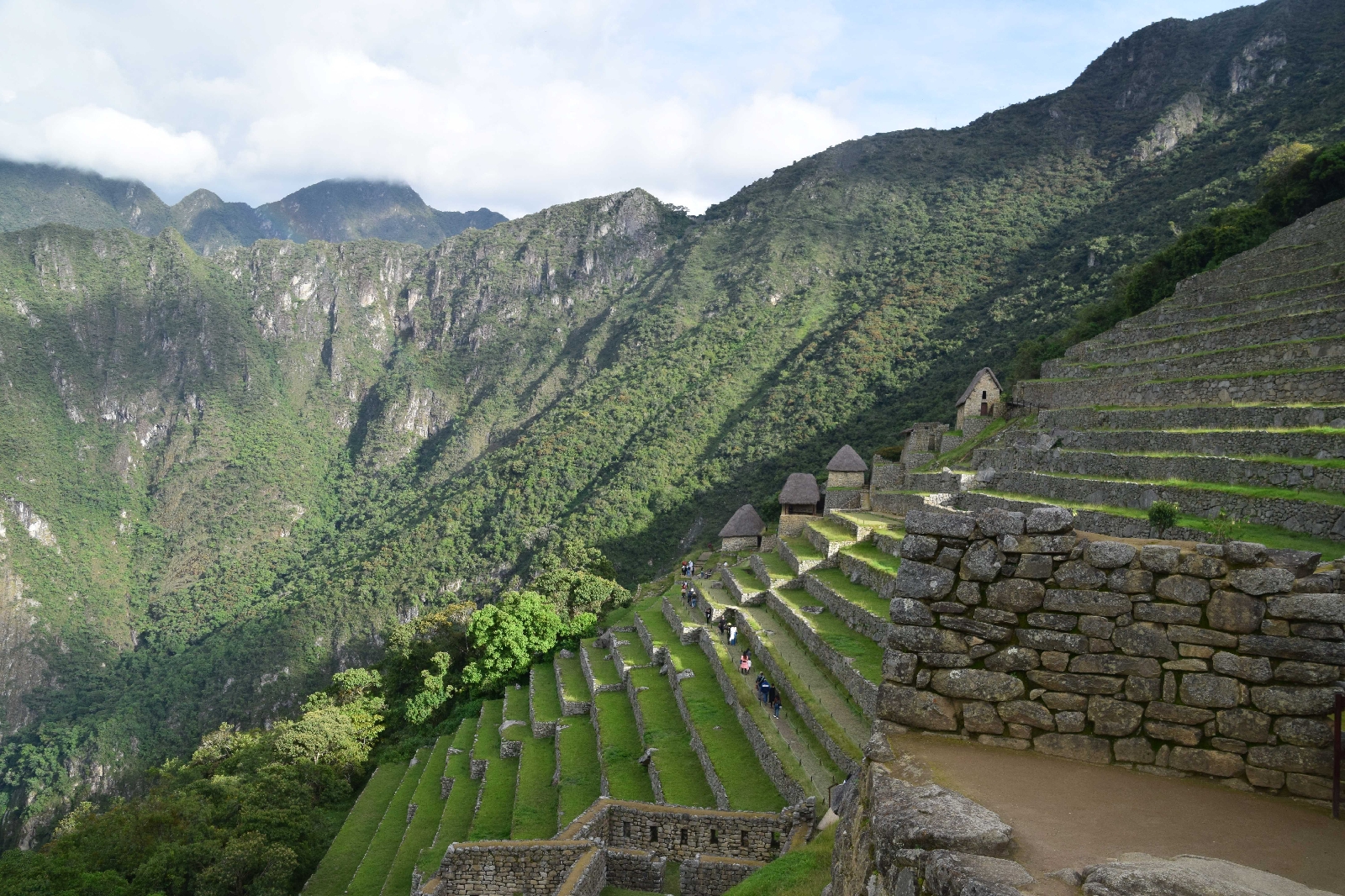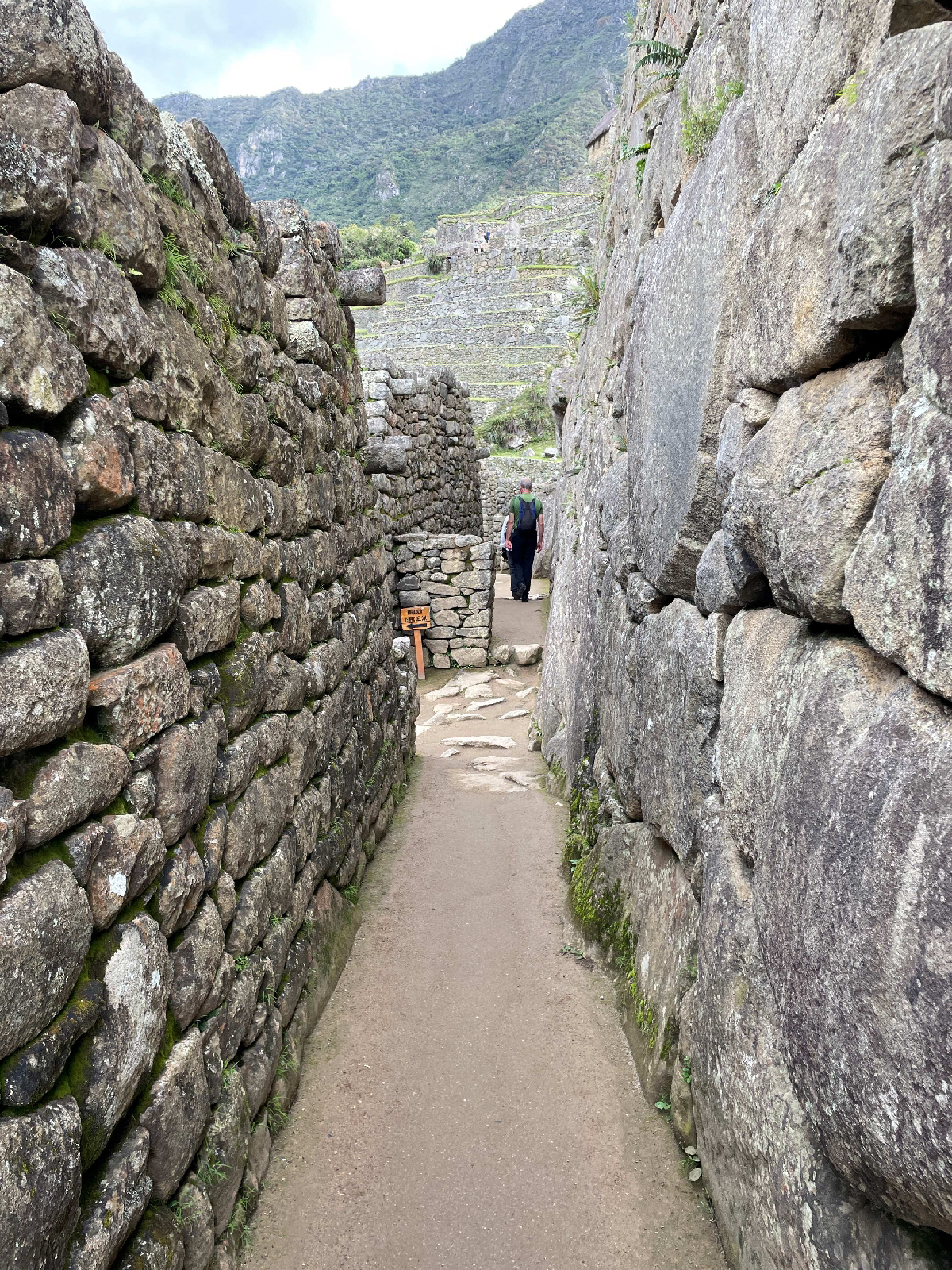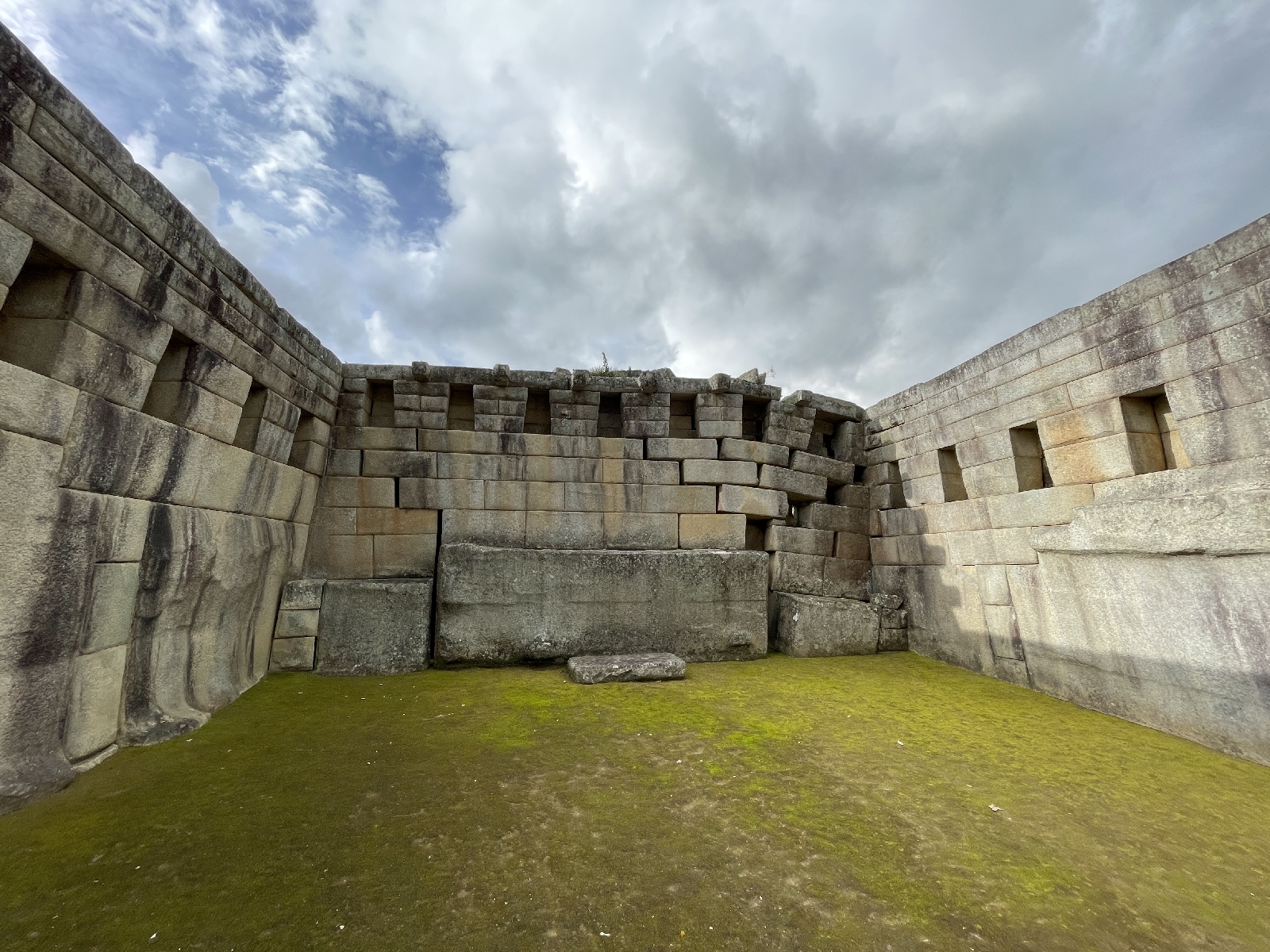Machu Picchu is difficult to access. You either walk in to it via the Inca Trail, which we think has to be organised and with a guide, or you access it from Aguas Calientes, a small town nearby. Aguas Calientes is only accessible by rail. So we took a minivan from Cusco for a couple of hours and then changed on to the Inca Rail train at Ollantaytambo. It was a very joyful experience. There is then a very efficient bus service, you can walk if you want, that takes you from Aguas Calientes up the hill to Machu Picchu. All these transport interchanges, but they all worked very well and efficiently.
We made a two day trip out of it. A relaxed day to get there and then the visit the following day. Despite it raining consistently in Aguas Calientes, it didn't rain at all when we were higher up on our visit. One of the strange things we found out was that Machu Picchu is the name of the mountain, not the 'town' and it's not the mountain that you see in the photos, that's Waynapicchu sometimes spelt as Huayna Picchu. The architectural remains of Machu Picchu were found just over 100 years ago after being abandoned for about 400 years. It is thought that it was a religious and educational facility or sanctuary for the Inca, located on top of a mountain for security reasons as a lot of these places were. It commands the valleys around it. A series of runners connected it to Cusco, taking about 11 days to get from one to the other.
Various theories exist as to why it was abandoned and the two most prevalent are that the Incas did not want the Spaniards to find it - and destroy it - and that fundamentally it had grown too big to be self-sustaining. The local food supply was capable of sustaining a population of about 150 people, but it had grown to 500. The culture was a manual culture; there was no talk of wheels and wheels wouldn't have been able to deal with the steps over the mountains and apparently llamas have weak backs and can only carry 15-20kgs. But all this is conjecture anyway. We had a superb visit with a great, very intense and spiritual guide. It is probably something we will never visit again in our lives and we are very glad to have experienced it, even if it has (severely) limited our resources for future visits to other things!


















